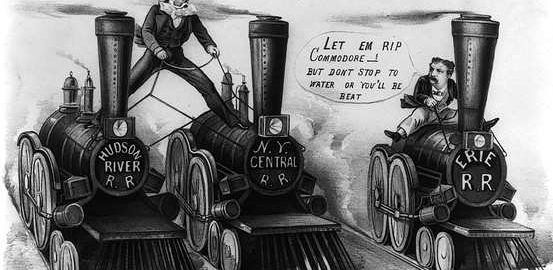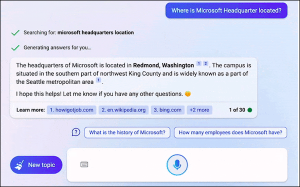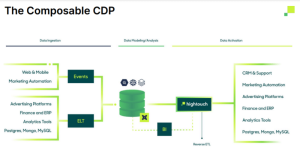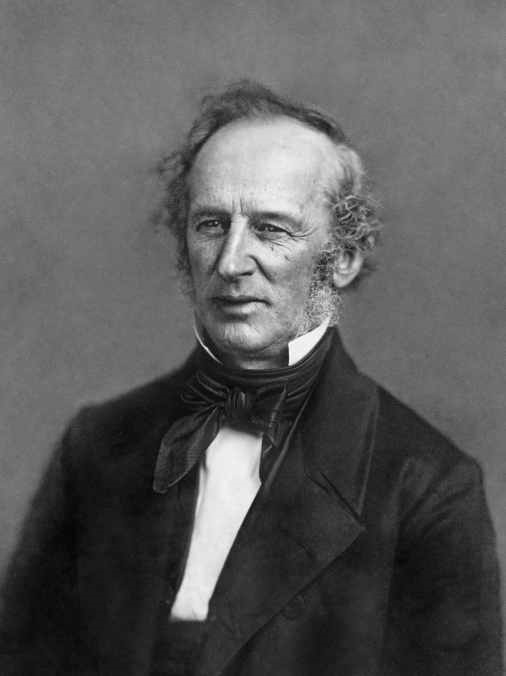
Cornelius Vanderbilt was a shipping tycoon that started with shipping freight by ferry to controlling one of the largest railroad networks.
Cornelius Vanderbilt Steamboat Legacy
Cornelius Vanderbilt quit school at age 11 and began working on one of his father’s ferries. By the time he was 16, he decided to start his own ferry business and bought a shallow draft two-masted sailing ship to ferry freight and passengers between Manhattan Island and Staten Island, New York. After saving his money, he bought his brother-in-law’s schooner and added it to his fleet.
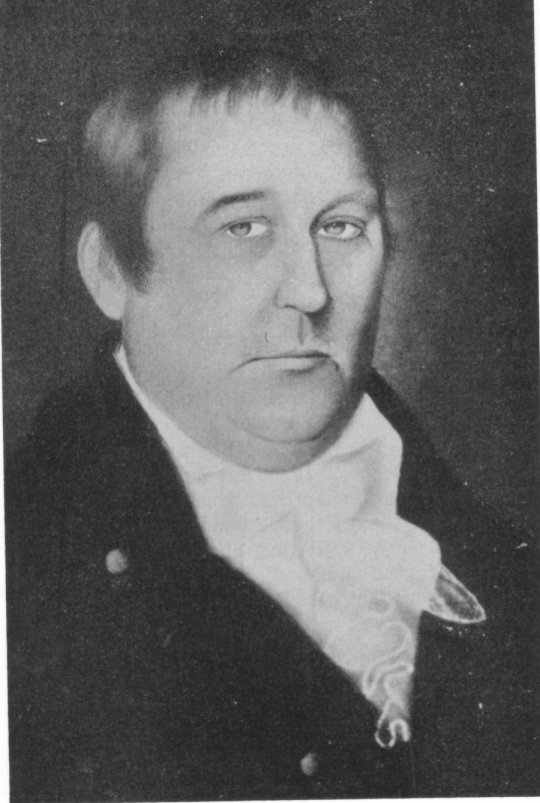
Thomas Gibbons – Steamboat Owner/Politician, Image Credit: DrRenShen
His energy and entrepreneurial spirit at such a young age caught the attention of Thomas Gibbons, who owned a steamboat enterprise. His entrepreneurial spirit also earned young Vanderbilt the nickname of “Commodore.” Vanderbilt watched as Gibbons went all the way to the Supreme Court to overturn the steamboat monopoly granted by NY state to an influential politician. After the victory,
Thomas Gibbons hired the young Vanderbilt to captain one of his steamboats. However, Vanderbilt continued to run his own shipping business on the side while he worked for Gibbons. He became Vanderbilt’s mentor. Vanderbilt watched as Gibbons used the profits from one part of his steamboat empire to undercut his competitor’s prices in another part, ultimately forcing his competitors out of business. Under the tutelage of Gibbons, Vanderbilt learned to operate a large and complicated business.
After Gibbons’s death, Vanderbilt used the lessons he had learned from Gibbons to expand his own shipping empire. Vanderbilt also observed how President Andrew Jackson used populist language to gain support for his various programs. Vanderbilt took the lessons he learned from Gibbons and combined them with President Jackson’s lessons. In addition to undercutting the fares of his competitors on the Hudson River, Vanderbilt named his line “The People’s Line” to gain popular support for his business.
With popular support for his business and lower prices than his competitors, Vanderbilt left his competition with only one option if they wanted to stay in business. They had to pay Vanderbilt to stop competing with them. Vanderbilt soon dominated the local shipping industry in and around NY. He expanded his empire to include ocean-going steamships to ferry gold from the California Gold Rush from Panama to the East Coast.
Cornelius Vanderbilt Railroad Legacy
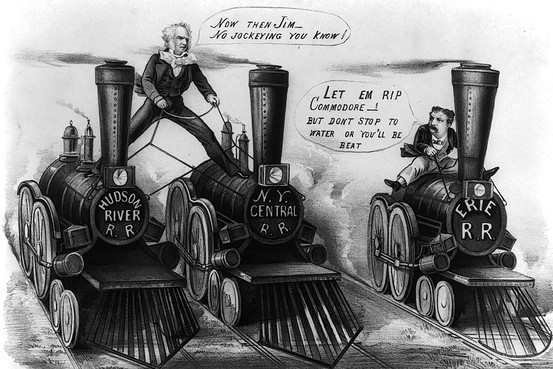
With the emerging Industrial Revolution, Vanderbilt saw that the railroad business was the future and would soon replace much of the ferry business. He began a campaign to take over the Stonington Railroad, a most attractive asset. He started by buying up some of the smaller connecting railroad lines and cutting fares, a trick he learned from his steamboat enterprise.
When he owned the choke points, he blocked the Stonington Railroad from having access to New York City. Fearing bankruptcy, Stonington Railroad‘s stockholders started to sell their stock. When the stock price hit rock bottom, Vanderbilt was able to buy their stock at an incredibly low price and take over. With control of the Stonington Railroad, Vanderbilt decided to sell all of his ships so he could concentrate on the railroad industry. He connected several of his railroads and built Grand Central Station in the heart of New York City.

After a dispute with the treasurer of the Erie Railroad, Vanderbilt plotted revenge and set his sights on connecting his railroads to Chicago by acquiring the Erie Railroad in a hostile takeover. However, Jay Gould and Jim Fisk, the financiers of the Erie Railroad, spotted Vanderbilt’s plot and began illegally printing new stock in order to dilute it.
Since state law restricted the number of shares a company could issue, Gould and Fisk bribed local legislators to legalize the new stock. Unaware he was being played, Vanderbilt continued to buy up stock and was milked out of 7 million dollars, the equivalent of over 1 billion dollars in today’s money. Gould and Fisk bragged about what they did and Vanderbilt threatened a lawsuit. The legislators and the illegal act of printing stock certificates were exposed, allowing Vanderbilt to recover most of his money.
Working with JD Rockefeller
Always looking for an edge, Vanderbilt saw that oil was discovered in Pennsylvania and Ohio. He realized that Kerosine, the oil used to light lamps, would soon change the world by turning night into day. Vanderbilt reached out to a small oil company run by a 27-year-old man named JD Rockefeller to make him a deal. Vanderbilt agreed to give Rockefeller a steep discount on his Kerosine shipping costs if Rockefeller shipped 60 train loads of Kerosine oil per day.
Rockefeller agreed to this deal even though his Kerosine production at the time was only about half of the contracted amount. Rockefeller agreed to Vanderbilt’s terms because transportation costs were a large part of the price of retail Kerosene and this deal allowed Rockefeller to make his Kerosine much cheaper to his consumers, thereby increasing his business.
Business Lesson from Cornelius Vanderbilt
Below are 8 business lessons that small business owners can take away from Cornelius Vanderbilt’s success as a businessman.
- Cornelius Vanderbilt became one of the captains of industry with little formal education. He found a mentor in Thomas Gibbons and took the lessons he learned to heart.
- Even as he expanded his empire, Vanderbilt continued to employ Gibbons’s lessons about undercutting the competition until they either paid him to not compete or they went bankrupt and he took over their company.
- He operated one business while employed in another.
- He learned that legislators could either create roadblocks or be used to clear them.
- He learned that if you had access to capital, you could subsidize portions of your business to drive out the competition or force them to pay you not to compete.
- Cornelius Vanderbilt saw that the industry was changing from ferrying freight via water to moving freight via the railroad and was not afraid to change focus as the shipping industry evolved.
- Moreover, Vanderbilt took the lessons he learned from the steamboat industry and applied them to his railroad industry.
- Vanderbilt also knew that pricing was the most powerful marketing tool a business owner could use to drive business.
What lessons from Cornelius Vanderbilt’s steamboat and railroad empire can you apply to your business?
Business & Finance Articles on Business 2 Community
(49)
